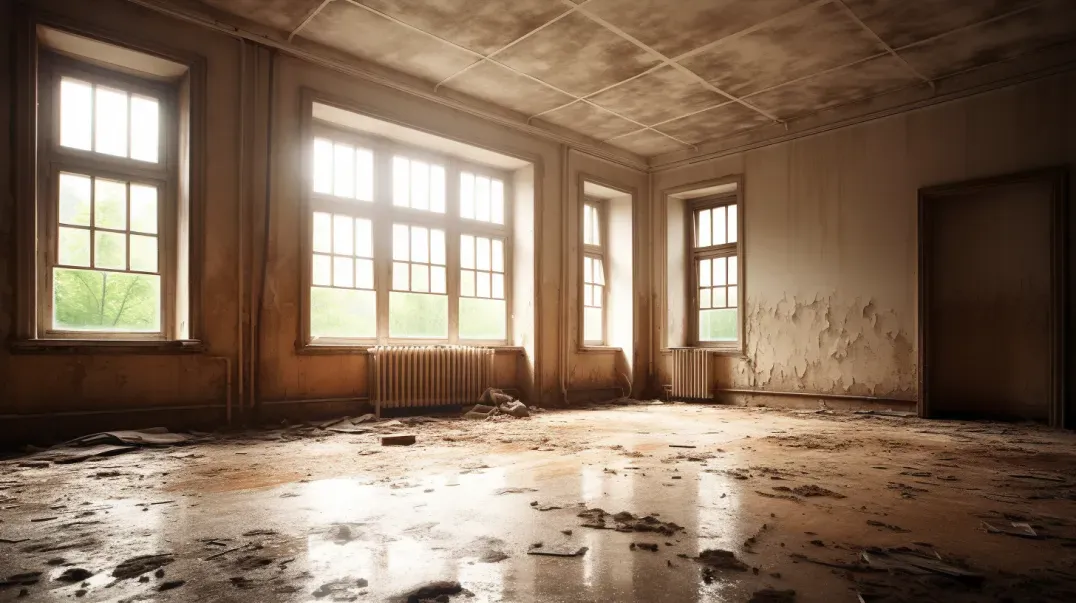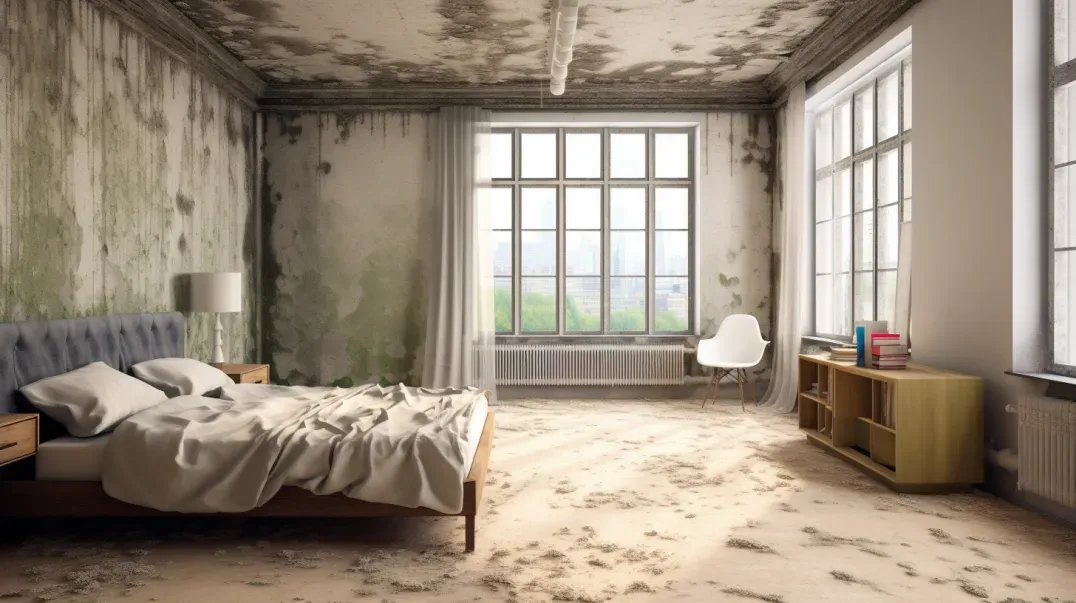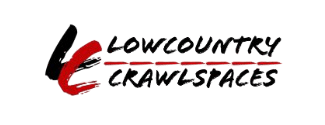The Importance of Proper Ventilation in Preventing Mold
Mold growth in indoor environments is not just a common nuisance; it poses significant health risks and structural damage to properties. The key to mold prevention lies not only in addressing the symptoms but in tackling one of its root causes: inadequate ventilation. This blog delves into the critical role that proper ventilation plays in controlling mold growth, offering insights into how air circulation, humidity control, and temperature management can create healthier living and working spaces.
Understanding the science of mold development is essential for recognizing the importance of ventilation. Mold thrives in moist, stagnant air environments, where it can proliferate rapidly and undetected. By exploring the mechanics of ventilation, from natural airflow to advanced HVAC systems, we will uncover how enhancing air movement and exchange can significantly reduce mold's ability to grow.
Equipped with expert advice and practical tips, this blog aims to empower homeowners, property managers, and health-conscious individuals with the knowledge to implement effective ventilation strategies. From identifying signs of inadequate ventilation to choosing the right tools and techniques for your space, we will guide you through creating an environment where mold cannot thrive.
Join us as we explore the pivotal role of ventilation in mold control, highlighting the latest research, expert opinions, and success stories. Whether you're battling an existing mold issue or proactively seeking to safeguard your environment, understanding the power of proper ventilation is your first step towards a healthier, mold-free space.
Understanding Mold and Indoor Air Quality
Indoor air quality significantly impacts our health, comfort, and well-being. One of the critical factors affecting indoor air quality is the presence of mold, a type of fungi that can grow indoors under certain conditions. This section of our blog aims to shed light on the basics of mold growth, the conditions that foster its proliferation, and the health impacts associated with indoor mold exposure.
The Basics of Mold Growth
Mold can be found almost everywhere, both indoors and outdoors. It plays a vital role in nature by breaking down dead organic matter. However, when mold grows indoors, it can become a problem. Mold growth is primarily driven by two factors: air quality and moisture. Understanding these factors is crucial in preventing mold proliferation in indoor environments.
- Air Quality and Moisture: Mold spores are present in the air we breathe, but they need moisture to grow and multiply. High humidity levels, water leaks, or condensation can provide the perfect conditions for mold growth. Poor ventilation exacerbates these conditions by allowing moist air to stagnate, creating an ideal environment for mold.
- Prevention Strategies: Controlling indoor humidity levels, ensuring proper ventilation, and promptly addressing water leaks are key strategies to prevent mold growth. It's also important to maintain clean HVAC systems and use dehumidifiers in areas prone to high humidity.
Health Impacts of Indoor Mold
Exposure to mold can lead to various health issues, ranging from mild allergic reactions to severe respiratory conditions. Understanding the potential health impacts of indoor mold is essential for recognizing the importance of maintaining good indoor air quality.
- Short-term Health Risks: Short-term exposure to mold can cause symptoms such as sneezing, itching, runny nose, red eyes, and skin rash. People with allergies or asthma may experience more severe reactions, including asthma attacks.
- Long-term Health Risks: Prolonged exposure to high levels of mold can lead to more serious health problems, including chronic respiratory conditions, immune system suppression, and in rare cases, lung infections. It's particularly concerning for individuals with pre-existing respiratory conditions, the elderly, and children.
By understanding the basics of mold growth and its potential health impacts, individuals can take proactive steps to improve indoor air quality and protect their health. This blog aims to provide readers with the knowledge and tools needed to identify, prevent, and address indoor mold issues effectively.
The Role of Ventilation in Mold Prevention
Effective ventilation plays a pivotal role in maintaining healthy indoor air quality and preventing mold growth. By managing indoor humidity levels and ensuring adequate air circulation, ventilation systems can significantly mitigate the risk of mold proliferation in homes and buildings. This section explores how proper ventilation affects moisture and mold and underscores the importance of air circulation in mold prevention.
How Ventilation Affects Moisture and Mold
Mold growth is closely linked to indoor humidity levels. Excess moisture in the air provides the perfect breeding ground for mold spores, which are naturally present in the environment, to settle and multiply. Proper ventilation is crucial in reducing indoor humidity levels, thereby minimizing the risk of mold growth.
- Reducing Humidity: Ventilation helps to remove moist air from indoor spaces and replace it with drier air from the outside, effectively lowering humidity levels. This is particularly important in areas prone to high moisture, such as kitchens, bathrooms, and basements.
- Preventing Condensation: By maintaining a balance between indoor and outdoor air temperatures, ventilation reduces the likelihood of condensation on cold surfaces, another common cause of mold growth.
Implementing strategies such as using exhaust fans, opening windows when weather permits, and ensuring that ventilation systems are correctly designed and maintained can significantly reduce moisture levels and prevent mold growth.
Ventilation and Air Circulation
Beyond reducing humidity, the role of ventilation in promoting air circulation is vital in preventing mold spore accumulation in indoor spaces. Stagnant air allows mold spores to settle and grow on surfaces, while continuous air movement hinders their ability to establish colonies.
- Enhancing Air Movement: Effective ventilation systems distribute air evenly throughout indoor spaces, ensuring that there are no stagnant air pockets where mold can thrive.
- Filtering Spores: Many modern ventilation systems come equipped with filters that can capture mold spores, reducing their concentration in the indoor air and further mitigating the risk of mold growth.
Ensuring that your home or building has adequate ventilation and air circulation is a key step in mold prevention. Regular maintenance of HVAC systems, including filter changes and inspections, is essential for optimal performance. Additionally, simple practices such as keeping doors between rooms open to enhance air flow can also contribute to preventing mold growth.
Effective Ventilation Strategies
Ensuring proper ventilation within indoor spaces is crucial for maintaining air quality, controlling humidity, and preventing mold growth. There are two primary approaches to achieving effective ventilation: natural and mechanical. Each method has its unique benefits and applications, depending on the specific needs of a home or building. This section explores natural ventilation techniques and mechanical ventilation solutions, offering best practices and recommendations for each.
Natural Ventilation Techniques
Natural ventilation leverages the natural forces of wind and thermal buoyancy to promote air exchange in and out of a building. This method is energy-efficient and can significantly enhance indoor air quality by reducing pollutants and lowering humidity levels.
Utilizing Windows, Doors, and Other Openings: The simplest way to achieve natural ventilation is by opening windows and doors to allow fresh air to circulate. Strategic placement of openings can facilitate cross-ventilation, ensuring a steady flow of air throughout the space.
Best Practices for Natural Ventilation: To maximize the effectiveness of natural ventilation, consider the direction of the wind and the layout of your home or building. Openings should be placed on opposite sides to encourage cross-ventilation. Additionally, consider the time of day and weather conditions; for example, opening windows in the early morning or late evening can introduce cooler air, reducing the need for air conditioning.
Mechanical Ventilation Solutions
While natural ventilation is effective under certain conditions, mechanical ventilation systems provide controlled and consistent air exchange regardless of external factors. These systems are particularly important in buildings where natural ventilation is insufficient.
Types of Mechanical Ventilation Systems: Common mechanical ventilation solutions include exhaust fans, which remove stale air from specific areas (like bathrooms and kitchens), and HVAC systems, which can filter, heat, or cool the air as it circulates throughout a building. Heat recovery ventilators (HRVs) and energy recovery ventilators (ERVs) are advanced options that improve energy efficiency by recovering heat or energy from the exhaust air.
Recommendations for Installation, Use, and Maintenance: When selecting a mechanical ventilation system, consider the size of your space and specific air quality needs. Ensure that the system is properly installed by a professional to achieve optimal performance. Regular maintenance, such as cleaning or replacing filters and inspecting ductwork, is crucial to maintain air quality and system efficiency. For systems like HRVs and ERVs, professional servicing is recommended to ensure they operate effectively and efficiently.
Ventilation Tips for Key Areas of the Home
Proper ventilation is essential in maintaining a healthy indoor environment, preventing mold growth, and ensuring the comfort of occupants. Different areas of the home have unique ventilation needs, especially those prone to high moisture levels or limited airflow. This section provides targeted ventilation tips for bathrooms and kitchens, basements and attics, and living and sleeping areas, addressing the specific challenges and offering practical solutions for each.
Bathrooms and Kitchens
Bathrooms and kitchens are high humidity areas due to activities like showering, cooking, and washing dishes. Effective ventilation in these spaces is crucial to prevent mold growth and maintain air quality.
Specific Ventilation Needs: These areas require direct ventilation to the outside to efficiently remove excess moisture and odors. Without proper ventilation, moisture can accumulate on surfaces, promoting mold growth and damaging materials.
Tips for Effective Use of Exhaust Fans and Windows: Install exhaust fans that vent directly outdoors and use them during and after moisture-producing activities. For kitchens, range hoods that exhaust to the outside are preferable. When weather permits, opening windows can supplement mechanical ventilation, promoting air exchange and reducing humidity levels.
Basements and Attics
Basements and attics are often challenging to ventilate due to their location and the tendency for these spaces to be neglected. They are prone to dampness and limited airflow, which can lead to mold growth and poor air quality.
- Challenges and Solutions: Ensure that basements and attics have adequate ventilation to prevent moisture buildup. In basements, use dehumidifiers to maintain low humidity levels and install vents or exhaust fans if necessary. For attics, proper roof ventilation (such as soffit and ridge vents) can help maintain airflow and prevent moisture accumulation.'
- Living and Sleeping Areas
- Living and sleeping areas are where people spend most of their time, making ventilation in these spaces crucial for comfort and health.
- Ensuring Adequate Air Exchange: Use a combination of natural and mechanical ventilation to ensure a continuous supply of fresh air. Ceiling fans can improve air circulation, and opening windows when weather permits can enhance air exchange. Ensure that HVAC systems are well-maintained and filters are regularly replaced to maintain air quality.
- Comfort and Mold Prevention: Adequate ventilation helps regulate temperature, reduce pollutants, and prevent moisture buildup, contributing to a comfortable and healthy living environment. Consider using air purifiers with HEPA filters to remove airborne particles and allergens, further improving air quality in these areas.
Professional Assessment and Solutions
While many ventilation issues can be addressed with basic knowledge and DIY solutions, certain situations require the expertise of professionals. Consulting with professionals for an assessment or intervention ensures that ventilation problems are accurately identified and effectively resolved, safeguarding the health of the building's occupants and the integrity of the structure. This section discusses scenarios where professional help is recommended and explains the process and benefits of professional ventilation audits and upgrades.
When to Consult with Professionals
There are several scenarios where seeking professional advice or services for ventilation issues is crucial:
Persistent Mold and Humidity Problems: If you've attempted to control mold and humidity with standard ventilation practices without success, it may indicate deeper issues that require professional assessment.
- Health Symptoms Related to Indoor Air Quality: If occupants experience health issues that improve when away from the building, this could signal poor indoor air quality that needs professional evaluation.
- Major Renovations or Building Extensions: Professional input is essential to ensure that new or modified spaces are adequately ventilated according to building codes and best practices.
- Installation of Advanced Ventilation Systems: The installation of complex systems, such as HRVs, ERVs, or whole-house ventilation systems, should be performed by professionals to ensure efficiency and compliance with safety standards.
Ventilation Audits and Upgrades
A professional ventilation audit is a comprehensive evaluation of a building's existing ventilation system and air quality. This process is crucial for identifying inefficiencies and areas for improvement.
- The Process: A professional auditor will inspect the ventilation system, including fans, ducts, filters, and air intakes, to assess their condition and performance. The auditor also evaluates air flow patterns, humidity levels, and potential pollutant sources within the building. This assessment may involve the use of specialized tools and equipment to measure air quality and ventilation effectiveness.
- Benefits: The primary benefit of a professional ventilation audit is the identification of specific problems and the development of targeted solutions to improve indoor air quality and energy efficiency. Recommendations may include cleaning, repairs, upgrades, or the installation of new systems. Implementing these recommendations can lead to healthier indoor environments, reduced energy costs, and enhanced comfort for occupants.
Professional assessments and solutions are invaluable for addressing complex ventilation issues, ensuring compliance with health and safety standards, and optimizing the indoor environment for comfort and well-being.
FAQs
Contact Lowcountry Crawlspaces Today!
Lowcountry Crawlspaces will do everything we can to ensure your experience with us is excellent.
Request A FREE Estimate
CHECKOUT RECENT POST



Schedule Your FREE Crawl Space Evaluation Today
There Is No Crawl Space Job We Can’t Fix!




